5 JULY 2010
YOUR WORDS
Readers are invited to add their comments to any story. Click on the article to see and add.
BTN DISTRIBUTION
BTN also goes out by email every Sunday night at midnight (UK time). To view this edition click here.
- ON THE SOAPBOX: Jim French - Chairman and Chief Executive Flybe
- Aegean Airlines and Star Alliance
- Airbus did receive subsidies according to WTO
- Airline cuts UK flights
- American Airlines introduces mobile boarding passes at Heathrow
- Bangkok hotel puts the troubles behind it
- Bethnal Green Town Hall becomes a hotel
- easyHotel expands into the Gulf
- Embraer jet for European executive charter operation
- Escape lounge opens in Manchester
- Helsinki to Singapore
- Japan Airlines gets ready for Haneda International
- London could have Thames cable car in time for the Olympics
- Lufthansa extends a welcome at Frankfurt
- More airline seats
- Passenger figures improve
- Pointe Noire (Congo) gets better connections
- Savoy to re-open
- South America for Qatar Airways
- Terminal 5 is working well says British Airways
- Travelodge set to be the largest London Olympic operator
- ON TOUR: Air Asia X
- AND FINALLY
The Business Travel News
PO Box 758
Edgware HA8 4QF
United Kingdom
info@btnews.co.uk
© 2022 Business Travel News Ltd.
Airbus did receive subsidies according to WTO
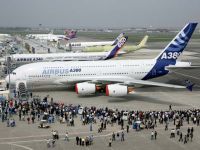 THE WORLD TRADE ORGANISATION (WTO) in a long (1,050 page) and damning report on the dispute between Boeing and Airbus over EU civil aircraft subsidies seems to have come down on the side of the US company. Even its conclusions ran to four pages. What makes it even more complicated is that the interim report on the countersuit against Boeing is now expected on 16 July. That is more than likely to find the Chicago-headquartered company guilty of illegal practices too, although American officials insist the EU assistance is much more serious than what is at stake with Boeing. How this affects future sales of the A380 and also the rapidly coming together A350 remains to be seen. The report is presumably being scrutinised by Brazilian, Canadian, Chinese, Indian, Japanese and Russian governments all of whom are supporting commercial aircraft projects. Airbus is bidding against Boeing to win a US$50bn contract to supply tankers to the US Air Force based on the A330 which WTO says was illegally subsidised. www.wto.org
THE WORLD TRADE ORGANISATION (WTO) in a long (1,050 page) and damning report on the dispute between Boeing and Airbus over EU civil aircraft subsidies seems to have come down on the side of the US company. Even its conclusions ran to four pages. What makes it even more complicated is that the interim report on the countersuit against Boeing is now expected on 16 July. That is more than likely to find the Chicago-headquartered company guilty of illegal practices too, although American officials insist the EU assistance is much more serious than what is at stake with Boeing. How this affects future sales of the A380 and also the rapidly coming together A350 remains to be seen. The report is presumably being scrutinised by Brazilian, Canadian, Chinese, Indian, Japanese and Russian governments all of whom are supporting commercial aircraft projects. Airbus is bidding against Boeing to win a US$50bn contract to supply tankers to the US Air Force based on the A330 which WTO says was illegally subsidised. www.wto.org
Bangkok hotel puts the troubles behind it
 LEADING HOTELS OF THE WORLD Sukhothai Bangkok has completed the first phase of its remodelling programme. Forty of its superior rooms are now complete with another 60 to be completely refurbished by the autumn. Set within six acres of tranquil, beautifully landscaped gardens in the business area of Bangkok, this iconic hotel was not involved in the recent troubles that recently affected other parts of the city. With the remodelled rooms flat screen televisions are discreetly installed behind grey mirrors to blend seamlessly with the décor when switched off. The hotel has four restaurants, including the outstanding Celadon, Thai traditional in both style and cuisine. The 210-room property offers the Spa Botanica, a limousine fleet, gym and swimming pool. www.sukhothai.com
LEADING HOTELS OF THE WORLD Sukhothai Bangkok has completed the first phase of its remodelling programme. Forty of its superior rooms are now complete with another 60 to be completely refurbished by the autumn. Set within six acres of tranquil, beautifully landscaped gardens in the business area of Bangkok, this iconic hotel was not involved in the recent troubles that recently affected other parts of the city. With the remodelled rooms flat screen televisions are discreetly installed behind grey mirrors to blend seamlessly with the décor when switched off. The hotel has four restaurants, including the outstanding Celadon, Thai traditional in both style and cuisine. The 210-room property offers the Spa Botanica, a limousine fleet, gym and swimming pool. www.sukhothai.com
Embraer jet for European executive charter operation
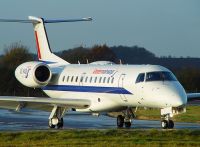 EASTERN AIRWAYS, based at Humberside on the English North East coast, has taken delivery of an Embraer 135 jet aircraft. It has signed a lease agreement for a second, which will increase its total fleet to 30. The UK independent was previously all turboprop, consisting of 20 29-seat British Aerospace Jetstream 41s and eight 50-seat Saab 2000s. These aircraft are used on the airline’s network contributing nearly 800 flights per week. The Embraer aircraft will be assigned to the charter flying programme serving blue-chip companies, corporations and individual groups across the UK and mainland Europe. www.easternairways.com
EASTERN AIRWAYS, based at Humberside on the English North East coast, has taken delivery of an Embraer 135 jet aircraft. It has signed a lease agreement for a second, which will increase its total fleet to 30. The UK independent was previously all turboprop, consisting of 20 29-seat British Aerospace Jetstream 41s and eight 50-seat Saab 2000s. These aircraft are used on the airline’s network contributing nearly 800 flights per week. The Embraer aircraft will be assigned to the charter flying programme serving blue-chip companies, corporations and individual groups across the UK and mainland Europe. www.easternairways.com
Japan Airlines gets ready for Haneda International
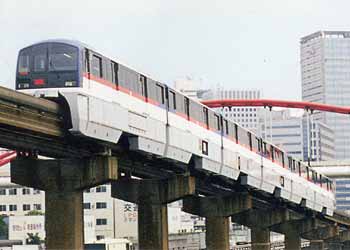 TOKYO’S Haneda Airport will reopen for international flights on 31 October with the introduction of the airport’s fourth runway. Since 1978 these services have been limited, most long haul flights operating from Narita Airport, 40 miles from the city centre. JAL will inaugurate seven daily flights to six international destinations – Bangkok, Honolulu, Paris, San Francisco, Singapore and Taipei's Songshan airport. It will also introduce a number of innovations including a quick transfer system between domestic and international terminals and various electronic check-in facilities. www.jal.com
TOKYO’S Haneda Airport will reopen for international flights on 31 October with the introduction of the airport’s fourth runway. Since 1978 these services have been limited, most long haul flights operating from Narita Airport, 40 miles from the city centre. JAL will inaugurate seven daily flights to six international destinations – Bangkok, Honolulu, Paris, San Francisco, Singapore and Taipei's Songshan airport. It will also introduce a number of innovations including a quick transfer system between domestic and international terminals and various electronic check-in facilities. www.jal.com
More airline seats
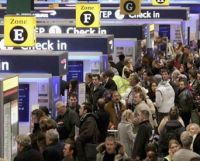 OAG (Official Airline Guide), the airline industry timetable provider, says that airlines worldwide will operate 5% more flights in July 2010 as compared to July 2009 validating the IATA report (see above) that a worldwide economic recovery is under way. However traffic within North America, the world’s largest aviation market, stills reflects a slight decrease of 1% both in frequencies and offered seats. Flight operations within Europe have increased by 24,198 flights to 623,637, an increase of 4%. Offered seats reflect an increase of 6% with 4,627,834 more seats compared to the same month last year. Traffic to/from Europe also reflects growth with an increase of 9% in the number of flights and 7% in offered seats. www.oag.com
OAG (Official Airline Guide), the airline industry timetable provider, says that airlines worldwide will operate 5% more flights in July 2010 as compared to July 2009 validating the IATA report (see above) that a worldwide economic recovery is under way. However traffic within North America, the world’s largest aviation market, stills reflects a slight decrease of 1% both in frequencies and offered seats. Flight operations within Europe have increased by 24,198 flights to 623,637, an increase of 4%. Offered seats reflect an increase of 6% with 4,627,834 more seats compared to the same month last year. Traffic to/from Europe also reflects growth with an increase of 9% in the number of flights and 7% in offered seats. www.oag.com
Savoy to re-open
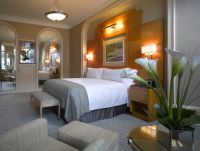 FAIRMONT HOTELS has set 10 October as the long-awaited reopening date for The Savoy, arguably London’s most iconic hotel. Reservations will be taken from 10 August. The re-introduction of The Savoy into London’s social scene will reveal a number of notable highlights including the complete remodelling of the legendary River Restaurant and introduction of a new luxurious two-bedroom Royal Suite. There are 38 River Suites and Guestrooms with stunning views over the River Thames. The hotel closed in December 2007 for a restoration that encompasses the entire building from the dramatic entrance and the American Bar to the Savoy Grill and to every one of the 268 guestrooms. www.the-savoy.com
FAIRMONT HOTELS has set 10 October as the long-awaited reopening date for The Savoy, arguably London’s most iconic hotel. Reservations will be taken from 10 August. The re-introduction of The Savoy into London’s social scene will reveal a number of notable highlights including the complete remodelling of the legendary River Restaurant and introduction of a new luxurious two-bedroom Royal Suite. There are 38 River Suites and Guestrooms with stunning views over the River Thames. The hotel closed in December 2007 for a restoration that encompasses the entire building from the dramatic entrance and the American Bar to the Savoy Grill and to every one of the 268 guestrooms. www.the-savoy.com
Travelodge set to be the largest London Olympic operator
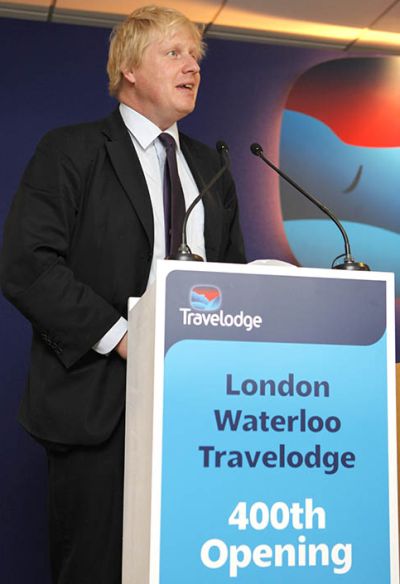 WATERLOO, on London’s South Bank, has a new Travelodge budget hotel, but don’t rush to make a booking. The 279-room property is completely booked out for the next month. The Mayor of London, Boris Johnson, officially opened what is Travelodge's 400th hotel and also joined in the party to celebrate the chain's 25th anniversary of its history going back to Trust House Forte. The seven-storey building, just past the Old VicTheatre, was once a bank and also government offices. Costing £21m the regeneration is impressive with lounges and a breakfast bar at ground level and every room spacious, with a flat screen TV and working area. It’s not The Ritz but with room rates starting at £19 and an excellent location it is clearly going to be a great success. www.Travelodge.co.uk
WATERLOO, on London’s South Bank, has a new Travelodge budget hotel, but don’t rush to make a booking. The 279-room property is completely booked out for the next month. The Mayor of London, Boris Johnson, officially opened what is Travelodge's 400th hotel and also joined in the party to celebrate the chain's 25th anniversary of its history going back to Trust House Forte. The seven-storey building, just past the Old VicTheatre, was once a bank and also government offices. Costing £21m the regeneration is impressive with lounges and a breakfast bar at ground level and every room spacious, with a flat screen TV and working area. It’s not The Ritz but with room rates starting at £19 and an excellent location it is clearly going to be a great success. www.Travelodge.co.uk
ON THE SOAPBOX: Jim French - Chairman and Chief Executive Flybe
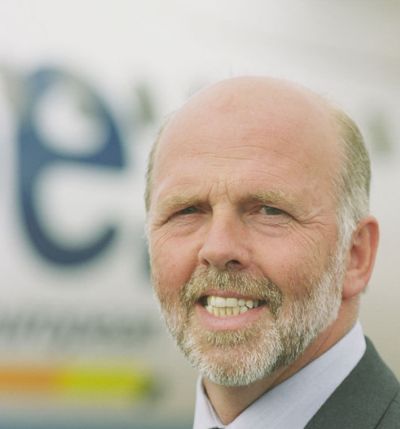 Jim French has been involved in the airline business for 40 years starting at Prestwick in 1970 with British Caledonian. He spent ten years with Air UK before joining what was at that time Jersey European Airways in 1990, the airline becoming Flybe in 2002. Flybe claims to be Europe’s largest regional carrier and operates a fleet of Embraer 195 jets and Bombardier Q400 turboprops. Jim uniquely has been voted ‘Airline Executive of the Year’ twice (2002 and 2004) by Regional Airline World and received a CBE in the 2009 Queen's Birthday Honours List.
Jim French has been involved in the airline business for 40 years starting at Prestwick in 1970 with British Caledonian. He spent ten years with Air UK before joining what was at that time Jersey European Airways in 1990, the airline becoming Flybe in 2002. Flybe claims to be Europe’s largest regional carrier and operates a fleet of Embraer 195 jets and Bombardier Q400 turboprops. Jim uniquely has been voted ‘Airline Executive of the Year’ twice (2002 and 2004) by Regional Airline World and received a CBE in the 2009 Queen's Birthday Honours List.
It seems only yesterday when Flybe was created and we announced that we were focusing fleet development on the Bombardier Q400 turboprop aircraft. Many in the industry were shocked that we were going to replace 50-seat jets with turboprops at a time when others were doing the exact opposite.
Indeed, the situation for turboprop orders was so dire that Bombardier had announced that they were closing the Q400 production line for eight weeks.
Everyone thought we were mad!
However our belief was that the pressure from the 'low cost' airlines would continue and consequently yields would continue to fall and unless our costs fell, then we would be out of business.
We had reached a turning point in the history of our airline since as Jersey European (and British European for a short period), we were facing extinction and indeed, without the support of our shareholders at the time, we would not be here today. A major element of our survival plan was to be absolutely focused on our key goals and one of these was the selection of the future aircraft fleet.
Whilst some say Flybe saved the Q400 since we gave the aircraft a massive vote of confidence by ordering 16 new aircraft, however it is equally true to say that the Q400 helped save Flybe.
The aircraft had the unique combination of 78-seat capacity, sufficient speed and range to operate across our existing network and the routes we had aspirations to develop. The Q400 economics delivered the lowest flight costs in our market. In financial terms the expenditure was similar to a 50-seat jet on a one hour sector, yet had 28 additional seats and was therefore a very effective competitive tool against these aircraft.
Its low costs would enable us to operate much higher frequencies than 150-seat jets for the similar total outlay and therefore we could use frequency to take market share against bigger jets – again on a one hour flight. These factors would enable us to develop new routes at the lowest expenditure and the aircraft’s speed combined with its cabin noise-cancelling technology were major considerations to enable us to stretch the envelope of sector length for customer acceptability.
So successful has this been that we now operate the largest Q400 fleet in the world, by some margin, with 58 aircraft.
More and more airlines are once again turning to turboprops as they search for acceptable economics.
The 50-seat jet balloon has burst as airlines around the globe struggle to make money. This was possibly the shortest product life cycle of any commercial aircraft. However this now leaves a fundamental unanswered question.
What’s next?
As an airline, we are always looking to the future – the long term future when it comes to aircraft planning.
Bombardier themselves have forecast 6,000 units up to 100 seats market over the next 20 years.
We ourselves will soon be considering the replacement for our original Q400s and we are hopeful that our airline will continue to expand once the economic situation improves. Therefore we have started looking around the market to see what the airframe and engine manufacturers are planning for the next generation of turboprop aircraft.
Where are the radical plans for engineering revolution which will deliver substantial fuel savings; weight savings; increased range and speed, customer appeal and space for reasonable amounts of hand baggage? Where is the new high speed, fuel efficient and very green 100-seat turbo prop?
Or even 80-seat turboprop, or 60, or 40?
The answer is – we haven’t found one! We cannot find any manufacturers who are planning something very radical!
So what does the future hold for turboprops? Is the simple fact that the potential gains outweigh the costs of development? Will simple design and manufacturing costs consign the next generation to be simple stretches or “upgrades” of the current aircraft.
Over the last two decades we have seen British Aerospace, Fokker, Dornier and CASA all disappear from regional aircraft and turboprop manufacture. We have seen the demise of the 50-seat jet economics.
Who will fill the potential void in regional aviation and with what?
Ironic isn’t it that whilst the military around the world still stretch the boundaries of manned and unmanned military development they have still acknowledged the need for a turboprop aircraft? Brand new at Farnborough is the Airbus A400M with four propeller turbines. A 250-seat ‘low cost’ passenger version is clearly not on but the technology is around for something smaller.
The airline industry needs an aircraft for the long term development of regional aviation.
Jim French
July 2010
Airline cuts UK flights
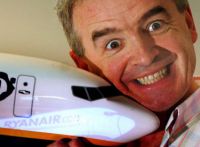 RYANAIR is to reduce its UK winter capacity from November, Chief Executive Michael O’Leary blaming the government’s Air Passenger Duty (APD) £11 tax as the cause. Stansted suffers the most with the Irish airline reducing its base fleet from 24 to 22 which according to the Irish airline is 17% but on our calculations is just 8%. Ryanair also says that “up to 1.5m” passengers will be lost during the period (about four months) which is impossible. National and regional newspapers usually accept these headline figures without checking. Ryanair says it will switch these London-based aircraft to other European bases where governments have scrapped tourist taxes and reduced passenger charges. It has cut winter flights at most of its other UK bases, except Edinburgh and Leeds Bradford. www.ryanair.com
RYANAIR is to reduce its UK winter capacity from November, Chief Executive Michael O’Leary blaming the government’s Air Passenger Duty (APD) £11 tax as the cause. Stansted suffers the most with the Irish airline reducing its base fleet from 24 to 22 which according to the Irish airline is 17% but on our calculations is just 8%. Ryanair also says that “up to 1.5m” passengers will be lost during the period (about four months) which is impossible. National and regional newspapers usually accept these headline figures without checking. Ryanair says it will switch these London-based aircraft to other European bases where governments have scrapped tourist taxes and reduced passenger charges. It has cut winter flights at most of its other UK bases, except Edinburgh and Leeds Bradford. www.ryanair.com
Bethnal Green Town Hall becomes a hotel
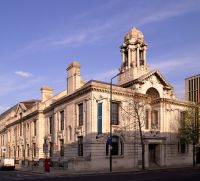 LONDON has a new and impressive hotel and apartment accommodation in an unfamiliar area for most visitors, Bethnal Green Town Hall. For those whose geography is not so strong Bethnal Green is in the heart of the East End, an area now revitalised with its nearness to ‘The City’ and the Stratford Olympic Park. The hotel is on the Central Line, the first Underground stop after Liverpool Street. The imposing and traditional 1930s building with Edwardian frontage and Neo-Classical fine stone frontage has been restored offering 98 spacious hotel rooms and apartments combining the amenities and luxuries of a 5-star hotel. Enormous craftsmanship has gone into a sensitive restoration of wide marble halls, dramatic staircases and stunning public rooms which include a traditional council chamber and the original council meeting rooms. Offering a mix of studios, one-bedroom suites, two-bedroom suites and feature rooms, every apartment is unique. www.townhallhotel.com
LONDON has a new and impressive hotel and apartment accommodation in an unfamiliar area for most visitors, Bethnal Green Town Hall. For those whose geography is not so strong Bethnal Green is in the heart of the East End, an area now revitalised with its nearness to ‘The City’ and the Stratford Olympic Park. The hotel is on the Central Line, the first Underground stop after Liverpool Street. The imposing and traditional 1930s building with Edwardian frontage and Neo-Classical fine stone frontage has been restored offering 98 spacious hotel rooms and apartments combining the amenities and luxuries of a 5-star hotel. Enormous craftsmanship has gone into a sensitive restoration of wide marble halls, dramatic staircases and stunning public rooms which include a traditional council chamber and the original council meeting rooms. Offering a mix of studios, one-bedroom suites, two-bedroom suites and feature rooms, every apartment is unique. www.townhallhotel.com
Escape lounge opens in Manchester
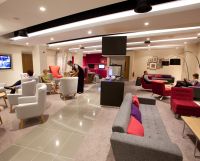 MANCHESTER AIRPORT has opened its new ‘Escape’ lounge in Terminal 1. Over 100,000 passengers are expected to use the facility every year. Continental breakfast is offered and snacks are available all day. The £1.7m investment has separate areas for relaxation and business, including a self-contained meeting or private function room. There are freshly made dishes from an on-site chef, a wide range of alcoholic and soft-drinks and for kids (of all ages!!) wii, PS3 and a giant Escape Scalectrix racetrack (something that was tried by Virgin Atlantic when it opened its first Upper Class lounge at Heathrow –Richard must have got bored with it!). Free wi-fi is also provided. The airport already has an ‘Escape’ offering in Terminal 2 and expects to launch a third in Terminal 3 in the near future. www.manchesterairport.co.uk
MANCHESTER AIRPORT has opened its new ‘Escape’ lounge in Terminal 1. Over 100,000 passengers are expected to use the facility every year. Continental breakfast is offered and snacks are available all day. The £1.7m investment has separate areas for relaxation and business, including a self-contained meeting or private function room. There are freshly made dishes from an on-site chef, a wide range of alcoholic and soft-drinks and for kids (of all ages!!) wii, PS3 and a giant Escape Scalectrix racetrack (something that was tried by Virgin Atlantic when it opened its first Upper Class lounge at Heathrow –Richard must have got bored with it!). Free wi-fi is also provided. The airport already has an ‘Escape’ offering in Terminal 2 and expects to launch a third in Terminal 3 in the near future. www.manchesterairport.co.uk
London could have Thames cable car in time for the Olympics
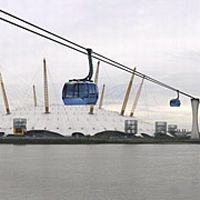 MAYOR OF LONDON Boris Johnson revealed yesterday (Sunday 4 July) plans for a spectacular cable car crossing of the Thames between the Greenwich Peninsula and Royal Docks. The proposals being developed by Transport for London (TfL) would provide a privately funded fully accessible link for pedestrians and cyclists which would cut travel times between the O2 concert arena and ExCeL exhibition and conference centre to around five minutes. The cable car would cross the river at a height of over 50 metres providing spectacular aerial views with a crossing every 30 seconds carrying up to 2,500 passengers per hour in each direction. www.tfl.gov.uk
MAYOR OF LONDON Boris Johnson revealed yesterday (Sunday 4 July) plans for a spectacular cable car crossing of the Thames between the Greenwich Peninsula and Royal Docks. The proposals being developed by Transport for London (TfL) would provide a privately funded fully accessible link for pedestrians and cyclists which would cut travel times between the O2 concert arena and ExCeL exhibition and conference centre to around five minutes. The cable car would cross the river at a height of over 50 metres providing spectacular aerial views with a crossing every 30 seconds carrying up to 2,500 passengers per hour in each direction. www.tfl.gov.uk
Passenger figures improve
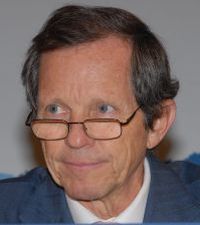 IATA now expects its member airlines to post a global profit of US$2.5bn in 2010, a major improvement compared with the Geneva-based organisation’s previous forecast released in March of a US$2.8bn loss. Outgoing Director General and CEO Giovanni Bisignani said: “We thought that it would take at least three years to recover the US$81bn (14.3%) drop in revenues in 2009. But the US$62bn top line improvement this year puts us about 75% on the way to pre-crisis levels,” he said. “The US$2.5bn profit comes with some important health warnings. First, this represents a net margin of just 0.5%, which is a long way from sustainable profitability. Second, a major part of the global industry is still posting big losses. A stagnating economy, strikes, natural disasters, and a currency crisis have left European carriers as the only region really struggling with an anticipated US$2.8bn loss. He highlighted Asia-Pacific carriers continuing to benefit from strong regional growth and that North American carriers are expected to return a profit of US$1.9bn. www.iata.org
IATA now expects its member airlines to post a global profit of US$2.5bn in 2010, a major improvement compared with the Geneva-based organisation’s previous forecast released in March of a US$2.8bn loss. Outgoing Director General and CEO Giovanni Bisignani said: “We thought that it would take at least three years to recover the US$81bn (14.3%) drop in revenues in 2009. But the US$62bn top line improvement this year puts us about 75% on the way to pre-crisis levels,” he said. “The US$2.5bn profit comes with some important health warnings. First, this represents a net margin of just 0.5%, which is a long way from sustainable profitability. Second, a major part of the global industry is still posting big losses. A stagnating economy, strikes, natural disasters, and a currency crisis have left European carriers as the only region really struggling with an anticipated US$2.8bn loss. He highlighted Asia-Pacific carriers continuing to benefit from strong regional growth and that North American carriers are expected to return a profit of US$1.9bn. www.iata.org
South America for Qatar Airways
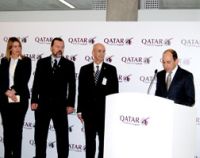 QATAR AIRWAYS has launched scheduled daily flights to Brazil and Argentina from Doha for the first time. The service to Sao Paulo, and onwards to Buenos Aires, is flown by a Boeing 777-200LR in a two-class configuration, 42 up front and 216 passengers in Economy. Sao Paulo is Brazil’s largest city and Buenos Aires the Argentinean capital. The two new routes complete a five-month expansion programme so far this year which has seen the airline introduce flights to Ankara, Barcelona, Bengaluru (Bangalore), Copenhagen and Tokyo. During a four-month period starting in October 2010, Qatar Airways will expand its international route network further with six new destinations, operating scheduled flights from Doha to Brussels, Bucharest, Budapest, Hanoi, Nice and Phuket. www.qatarairways.com
QATAR AIRWAYS has launched scheduled daily flights to Brazil and Argentina from Doha for the first time. The service to Sao Paulo, and onwards to Buenos Aires, is flown by a Boeing 777-200LR in a two-class configuration, 42 up front and 216 passengers in Economy. Sao Paulo is Brazil’s largest city and Buenos Aires the Argentinean capital. The two new routes complete a five-month expansion programme so far this year which has seen the airline introduce flights to Ankara, Barcelona, Bengaluru (Bangalore), Copenhagen and Tokyo. During a four-month period starting in October 2010, Qatar Airways will expand its international route network further with six new destinations, operating scheduled flights from Doha to Brussels, Bucharest, Budapest, Hanoi, Nice and Phuket. www.qatarairways.com
ON TOUR: Air Asia X
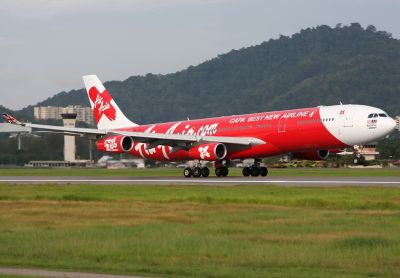 Air Asia X is probably the world’s first long haul ‘low cost’ airline. In a practical sense it is a development of the charter airlines that for many years have been operating budget flights across the North Atlantic, and in more recent times offering add-ons at a price, typically uprated seating and more ambitious menus.
Air Asia X is probably the world’s first long haul ‘low cost’ airline. In a practical sense it is a development of the charter airlines that for many years have been operating budget flights across the North Atlantic, and in more recent times offering add-ons at a price, typically uprated seating and more ambitious menus.
‘Low cost’ long haul scheduled airlines, at least out of the UK, started with a premium product, and were all financial disasters. Eos, MaxJet and Sliverjet, with L’Avion in Paris rescued by British Airways. They were also stand alone.
Whilst in some respects ‘X’ likes to distance itself from Air Asia, it is clearly not stand alone. On the London to Kuala Lumper (KL) service 80% of passengers transfer, mainly to Air Asia flights. They are all ‘self-connecting’ with the exception of the Air Asia X A330 service to Perth (Australia) where through baggage can be checked in. Melbourne is expected to follow. The marketing push for Air Asia in South East Asia helps to promote the ‘X’ services at no cost to the sister airline. Likewise from Europe. The airlines feed each other.
Airline spin-off
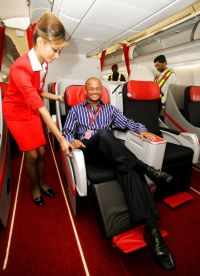 Air Asia X was born in November 2007, essentially as a spin-off from its namesake, a successful regional low cost airline that made its first flight in November 1996. Air Asia is now a listed company on the Kuala Lumpur stock exchange. Air Asia X is 48%-owned by Aero Ventures (a venture of Tony Fernandes and other prominent Malaysians and Air Canada's Robert Milton), followed by 16% Virgin Group and 16% by AirAsia the listed company. Bahrain-based Manara Consortium and Japan-based Orix Corp have taken 20%.
Air Asia X was born in November 2007, essentially as a spin-off from its namesake, a successful regional low cost airline that made its first flight in November 1996. Air Asia is now a listed company on the Kuala Lumpur stock exchange. Air Asia X is 48%-owned by Aero Ventures (a venture of Tony Fernandes and other prominent Malaysians and Air Canada's Robert Milton), followed by 16% Virgin Group and 16% by AirAsia the listed company. Bahrain-based Manara Consortium and Japan-based Orix Corp have taken 20%.
What has surprised the carrier’s executives is the amount of transfer traffic at Stansted, said to be around 20%. Passengers have to collect their luggage and then come landside before checking in. Whilst business can be expected from Ireland and Scotland, regular travellers experienced with connecting through Stansted, Northern Europe, Dutch and even German customers are finding the prices more attractive than other gateways and carriers. Whether this will continue, with the British government’s drive to squeeze every penny out of the airline industry remains to be seen.
Tim Claydon, Air Asia’s Commercial Consultant, is adamant that the package that the airline essentially offers in its Premium Class is space: “You are buying a top quality flat bed and the surrounding area. Nothing more. That is why our fares can be one-third of competitors. Everything else is an extra.”
Long range Airbus A340
 The airline has now completed the refurbishment of its pair of former Air Canada Airbus A340s, at a cost of £2m each and in a novel way. In the centre of the aircraft are 18 Premier Class full flat seats laid out 2+2+2 with universal power points and privacy screen. Branded blankets and pillows are provided, but they are not giveaways although you can purchase them. The cabin has a very nice ambience about it with a mix of red and grey.
The airline has now completed the refurbishment of its pair of former Air Canada Airbus A340s, at a cost of £2m each and in a novel way. In the centre of the aircraft are 18 Premier Class full flat seats laid out 2+2+2 with universal power points and privacy screen. Branded blankets and pillows are provided, but they are not giveaways although you can purchase them. The cabin has a very nice ambience about it with a mix of red and grey.
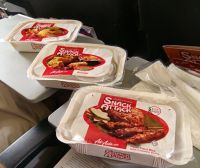 There is something of a culture shock for passengers used to the Business Class offering of IATA scheduled carriers. You do get a special check-in desk but no Fast Track pass nor lounge pass , although the excellent Servisair offering is close to the gate. Most clients have access but in any event you can pay for services provided. No free alcoholic drinks. The meals are the same as Economy (and first rate judging by the quality served at Stansted at a press reception). The two servings, westbound the flights can be up to 14 hours, are part of the package. There is a choice of three main courses Asian, international and vegetarian plus a good selection of snacks. You can buy wine and beer very competitively, but that’s it, or a bottle of expensive whisky. If you are that way inclined it’s best to purchase at the Stansted duty free. With the exception of bottled liquor everything on board is priced very keenly in Malaysian Riggitts (MYR).
There is something of a culture shock for passengers used to the Business Class offering of IATA scheduled carriers. You do get a special check-in desk but no Fast Track pass nor lounge pass , although the excellent Servisair offering is close to the gate. Most clients have access but in any event you can pay for services provided. No free alcoholic drinks. The meals are the same as Economy (and first rate judging by the quality served at Stansted at a press reception). The two servings, westbound the flights can be up to 14 hours, are part of the package. There is a choice of three main courses Asian, international and vegetarian plus a good selection of snacks. You can buy wine and beer very competitively, but that’s it, or a bottle of expensive whisky. If you are that way inclined it’s best to purchase at the Stansted duty free. With the exception of bottled liquor everything on board is priced very keenly in Malaysian Riggitts (MYR).
Passengers in the rest of the aircraft pay for soft drinks as well, and everyone is charged for the E-player laptop screen that not only offers a selection of movies and TV, but audio as well. In order to keep the price down the luggage limit is 15kg for everyone. Or you can buy in advance on the web at a discount.
Turn left for Economy
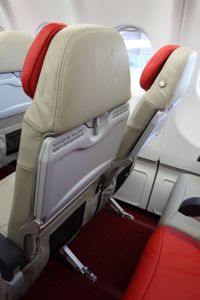 It is considered smart to tell one’s friends that you turn left when getting on an aircraft (ie into the premium cabin). With Air Asia X if you turn left you step into a very nice Economy cabin of eight rows, nine abreast. It really does look fine and if the airline decides to charge extra ‘up front’ who can blame them. The seats themselves are to a new lightweight design, do recline and give the feeling of even more than the 32” seat pitch that is offered.
It is considered smart to tell one’s friends that you turn left when getting on an aircraft (ie into the premium cabin). With Air Asia X if you turn left you step into a very nice Economy cabin of eight rows, nine abreast. It really does look fine and if the airline decides to charge extra ‘up front’ who can blame them. The seats themselves are to a new lightweight design, do recline and give the feeling of even more than the 32” seat pitch that is offered.
Air Asia X has one big advantage. British Airways does not currently fly between London and Kuala Lumpur and therefore Malaysian Airways has the field to itself. A quick check showed that Air Asia X was cheaper in Economy and about half the price in Business Class. But it does depend when you want to fly and how far ahead you are booking. There is of course competition from the Gulf-based airlines.
At the other end passengers use the KL International Airport Low Cost Terminal which has received mixed reviews but does have a proper Premium Lounge, once again available for a fee. However wi-fi comes with the compliments of the airport operator. The bus fare into the city is just £2 by comparison with an astonishing £19.80 single (£28.70 return) on the Stansted Express train to London’s Liverpool Street (the Stansted Slow – it stops at two intermediate stations). The railway web site does not show the off peak fares at all in what appears to be a ruse to overcharge visitors to the UK. First Class the charge is £46 return purchased from a machine, clearly only used by MPs and others on expenses, and by railway staff.
Talk of an Air Asia X IPO seems a little premature. According to Chief Executive Azran Osman Rani this will not happen until the end of next year.
Aegean Airlines and Star Alliance
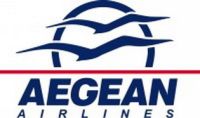 STAR ALLIANCE has formally welcomed Greek carrier Aegean Airlines as a member. Founded in 1987 it is now Greece’s largest airline and is in the process of taking over Olympic Air but still is waiting for approval from the European Commission. At the time of the merger announcement it was said that eventually the name Aegean would disappear but this appears now less likely. Currently the airline has a fleet of 30 aircraft, mainly Airbus A320 series plus six Avro regional jets. Olympic has around the same number, again the majority Airbus A320 but also Bombardier Dash 8 series. Both airlines operate separately Heathrow – Athens, Aegean already into the Star Alliance T1 and Olympic at T4. www.aegeanair.com
STAR ALLIANCE has formally welcomed Greek carrier Aegean Airlines as a member. Founded in 1987 it is now Greece’s largest airline and is in the process of taking over Olympic Air but still is waiting for approval from the European Commission. At the time of the merger announcement it was said that eventually the name Aegean would disappear but this appears now less likely. Currently the airline has a fleet of 30 aircraft, mainly Airbus A320 series plus six Avro regional jets. Olympic has around the same number, again the majority Airbus A320 but also Bombardier Dash 8 series. Both airlines operate separately Heathrow – Athens, Aegean already into the Star Alliance T1 and Olympic at T4. www.aegeanair.com
American Airlines introduces mobile boarding passes at Heathrow
 HEATHROW has become American Airlines’ first overseas station to offer a mobile telephone boarding pass option. Saving time and paper, customers will be able to choose to receive boarding passes electronically on their mobile phones (or smartphones). The process is simple. When customers check in for their flight using AA.com and opt to accept their boarding pass this way they will receive an email with an internet link to the boarding pass. Customers must have an active email address where their boarding pass can be sent and an internet-enabled mobile device where the 2-D barcode can be received. At the airport, customers simply scan their mobile phone when going through security (proper identification must be presented) and when boarding, just as they would a traditional paper boarding pass. Customers wishing to check bags can also use the electronic option by scanning the boarding pass on their mobile phone at American Airlines self-service machines or ticket counters. www.aa.com
HEATHROW has become American Airlines’ first overseas station to offer a mobile telephone boarding pass option. Saving time and paper, customers will be able to choose to receive boarding passes electronically on their mobile phones (or smartphones). The process is simple. When customers check in for their flight using AA.com and opt to accept their boarding pass this way they will receive an email with an internet link to the boarding pass. Customers must have an active email address where their boarding pass can be sent and an internet-enabled mobile device where the 2-D barcode can be received. At the airport, customers simply scan their mobile phone when going through security (proper identification must be presented) and when boarding, just as they would a traditional paper boarding pass. Customers wishing to check bags can also use the electronic option by scanning the boarding pass on their mobile phone at American Airlines self-service machines or ticket counters. www.aa.com
easyHotel expands into the Gulf
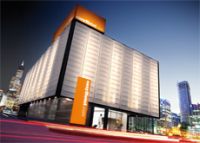 DUBAI will have an easyHotel from 1 August. Located within the Jebel Ali Free Zone on Sheikh Zayed Road, the six-storey new buid property offers 216 air-conditioned guestrooms. Room costs vary ‘the earlier you book, the less you pay’. It is very much a ‘no frills’ approach and is completely transparent on its services and pricing structure. Services such as luggage storage, early check-in, late check-out, snacks, drinks and wi-fi internet access will be available for an additional charge. The easyHotel brand, all operated under franchises, now extends to 14 locations with five in London as well as Basel, Berlin, Budapest, Larnaca, Luton, Sofia and Zurich. www.easyhotel.com
DUBAI will have an easyHotel from 1 August. Located within the Jebel Ali Free Zone on Sheikh Zayed Road, the six-storey new buid property offers 216 air-conditioned guestrooms. Room costs vary ‘the earlier you book, the less you pay’. It is very much a ‘no frills’ approach and is completely transparent on its services and pricing structure. Services such as luggage storage, early check-in, late check-out, snacks, drinks and wi-fi internet access will be available for an additional charge. The easyHotel brand, all operated under franchises, now extends to 14 locations with five in London as well as Basel, Berlin, Budapest, Larnaca, Luton, Sofia and Zurich. www.easyhotel.com
Helsinki to Singapore
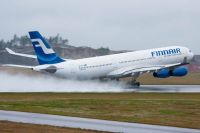 FINNAIR, heavy in promoting its connections to the Far East from Helsinki and northern Europe, is to add Singapore to its list of destinations from spring next year. There are currently no direct flights between the two cities. The airline points out that Singapore is an ideal hub for connecting to its oneworld partners and their services to Australia and Southeast Asia. Finnair will operate the Singapore service with Airbus A340 aircraft. The new route will be opened on 30 May 2011. www.finnair.com
FINNAIR, heavy in promoting its connections to the Far East from Helsinki and northern Europe, is to add Singapore to its list of destinations from spring next year. There are currently no direct flights between the two cities. The airline points out that Singapore is an ideal hub for connecting to its oneworld partners and their services to Australia and Southeast Asia. Finnair will operate the Singapore service with Airbus A340 aircraft. The new route will be opened on 30 May 2011. www.finnair.com
Lufthansa extends a welcome at Frankfurt
 CHILDREN are being made very welcome in what is Lufthansa’s first dedicated lounge for young people. It is situated within the Lufthansa Business Lounge in Departure Area B at Frankfurt Airport. It offers a ‘Jet Friends’ area for children, with the youngest passengers having their own dedicated place to romp about in and play. A kids' corner and playpen will keep the very young quietly occupied, while drawing tables, bean bags, a PC with internet access and game consoles available for the older children. For entertainment, the lounge also has a children's cinema with comfortable leather benches. Frequent flyers and their families, probably connecting, but not in Business Class, can use the lounge for a fee. www.lufthansa.com/malwettbewerb
CHILDREN are being made very welcome in what is Lufthansa’s first dedicated lounge for young people. It is situated within the Lufthansa Business Lounge in Departure Area B at Frankfurt Airport. It offers a ‘Jet Friends’ area for children, with the youngest passengers having their own dedicated place to romp about in and play. A kids' corner and playpen will keep the very young quietly occupied, while drawing tables, bean bags, a PC with internet access and game consoles available for the older children. For entertainment, the lounge also has a children's cinema with comfortable leather benches. Frequent flyers and their families, probably connecting, but not in Business Class, can use the lounge for a fee. www.lufthansa.com/malwettbewerb
Pointe Noire (Congo) gets better connections
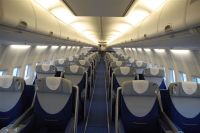 LUFTHANSA is to introduce on 3 November a five times a week flight to Pointe Noire, the principal port in the Republic of the Congo (pending regulatory approval). Operated by a Boeing 737-800 from PrivatAir, flights to the Congolese city include a stopover in Libreville (Gabon). Pointe Noire is home to nearly 700,000 of the country's total population of around 4m people. The oil industry, a key factor in the economy of the West African Republic, accounts for about 90% of export earnings. The aircraft will operate with a two-class layout including fully flat seats in Business Class. www.lufthansa.com
LUFTHANSA is to introduce on 3 November a five times a week flight to Pointe Noire, the principal port in the Republic of the Congo (pending regulatory approval). Operated by a Boeing 737-800 from PrivatAir, flights to the Congolese city include a stopover in Libreville (Gabon). Pointe Noire is home to nearly 700,000 of the country's total population of around 4m people. The oil industry, a key factor in the economy of the West African Republic, accounts for about 90% of export earnings. The aircraft will operate with a two-class layout including fully flat seats in Business Class. www.lufthansa.com
Terminal 5 is working well says British Airways
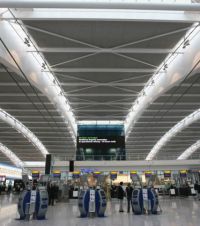 BRITISH AIRWAYS has welcomed its 50 millionth customer through Heathrow Terminal 5 in a little over two years since it opened amid controversy and chaos in March 2008. As measured by industry standards, British Airways has improved its punctuality at Heathrow from an average of around 50% on time departures each month when it was split located in Terminal 1 and 4, to about 80% currently. Many days the airline can achieve 90% of on time departures at Terminal 5. In addition, thanks to Terminal 5, British Airways says it now has the best baggage performance of any major European hub-based carrier. Overall levels of punctuality and baggage operations will improve even further when a new £300m third part of the terminal campus, known as T5C, opens for customers in early summer 2011. www.ba.com
BRITISH AIRWAYS has welcomed its 50 millionth customer through Heathrow Terminal 5 in a little over two years since it opened amid controversy and chaos in March 2008. As measured by industry standards, British Airways has improved its punctuality at Heathrow from an average of around 50% on time departures each month when it was split located in Terminal 1 and 4, to about 80% currently. Many days the airline can achieve 90% of on time departures at Terminal 5. In addition, thanks to Terminal 5, British Airways says it now has the best baggage performance of any major European hub-based carrier. Overall levels of punctuality and baggage operations will improve even further when a new £300m third part of the terminal campus, known as T5C, opens for customers in early summer 2011. www.ba.com



